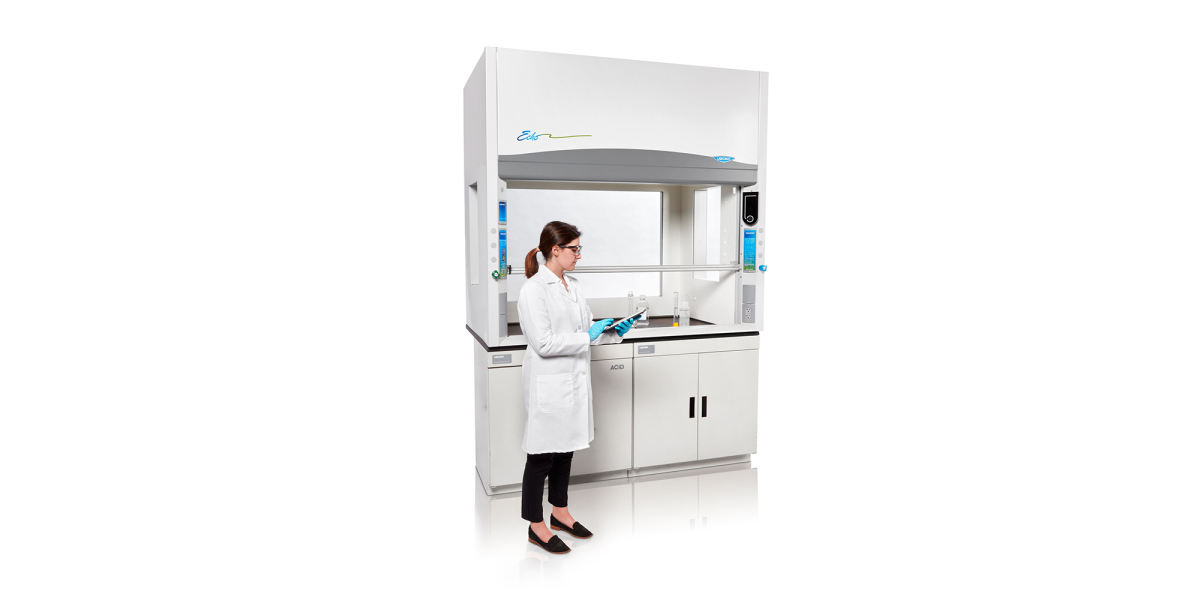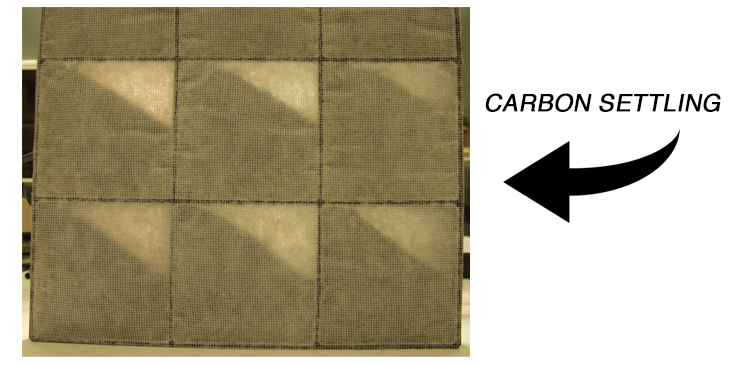Q&A on GreenFumeHood (GFH) Filtration Technology

GreenFumeHood Technology is unique because it adds elements of safety, energy savings and versatility to lab environments. Erlab debuted GFH Filtration Technology at Pittcon in 2008, offering manufacturers like Labconco access to an altogether new and sustainability-focused hood operating system.
The fact that the resulting fume hoods are far and away superior to other kinds of chemical fume filtering systems raises many questions.
- What makes GFH technology different?
- Precisely how does it allow for more energy-conscious and cost-effective hood operation?
- Could we get a glimpse into the science behind the features?
I discussed these questions—and many more—with Ken Crooks, Director of GFH Technology at Erlab
Q: Let's start with the basics.
One of the key elements of your GFH Technology is the inclusion of Neutrodine Unisorb filters, a new and significantly better-performing type of carbon filter. Can you give me a little background on carbon filtration for context before we dive in?
A: Carbon has been used for personal protection over 100 years now (think gas masks in WWI). It has evolved significantly over this time and most improvements focus on it being able to adsorb a broader range of chemicals and do so at a higher capacity.
All of us enjoy the individual and environmental benefits of carbon-based filtration every day, in the form of drinking water treatment, wastewater treatment, air purification and chemical purification.
Q: Why are the Neutrodine Unisorb filters so novel compared to other carbon filters on the market?
A: Instead of getting our carbon ready for a specific molecule like other manufacturers, Erlab decided to flip the equation and get the various molecules ready for our carbon. Our multi-layer design allows the filter to neutralize acid molecules before they reach the carbon, and the original molecule has been transformed.
Yes, we still use activated carbon—with the highest capacity available—and we treat it with proprietary impregnates that are not heavy metals, but not at the cost of any class of chemicals. Neutrodine Unisorb filters can adsorb acids, bases and solvents, simultaneously and in large capacity, making them ideal for applications that use a wide variety of chemicals, such as undergraduate chemistry teaching labs (general, organic, inorganic), QC test labs, cosmetics R&D labs, petrochemical companies and many other applications.
Q: What else makes up GFH technology besides the Neutrodine Unisorb filters?
A: The entire filtration technology package including the breakthrough detection and communication systems and, of course, the fume hood structure underneath it all. From a detection and safety standpoint, users must be warned when filters are losing their efficiency and chemicals are breaking through. GFH technology includes a suite of detectors (solvent and acid) that will alarm when the primary filter is approaching saturation.
The detectors do not provide a ppm or ppb reading to the user and they do not require frequent recalibration or replacement. Instead, they simply detect when the air is no longer clean and sound an alarm—this is in keeping with our philosophy of "simpler, safer."
If chemicals do break through the primary filter, an identical secondary Neutrodine filter captures them. With this double filter arrangement, the user exposure is always less than 1% of Threshold Limit Value (TLV) as set by ACGIH or OSHA. Plus, hood use can safely continue while a filter change is being scheduled.
Q: What makes GFH technology safer?
A: I'm going to spend a little time with this one because it's so important. Erlab has engineered the most optimal filter frame for molecular filtration, and we've spent over 47 years perfecting crucial components of our filters. This proprietary design prevents channeling and shifting of the carbon during transport and use.
Think of it this way: similar to electrical current, air will flow along the path of least resistance. If the inside perimeter of the filter frame allows preferential passages for the air to flow without chemical removal, the chemicals would break through very quickly. Additionally, the entire surface area of the filter frame presents consistent air pressure drop (friction to air flow, if you will) so that there is even airflow throughout the entire carbon bed. These improvements allow the vast majority of the carbon to be utilized before any chemical breakthrough occurs.
For comparison, consider if you were to stack two (or even 15) inferior carbon filters on top of each other and that each filter has preferential passages for the air to flow without chemical removal, then the user would not be safe for long, if at all, because the chemicals would quickly break through all of the filters. Erlab’s Neutrodine technology allows the use of a Primary and a Secondary filter, each with superior capacity and range of chemical adsorption.
Q: I understand that Neutrodine Unisorb filters prevent carbon shifting and carbon channeling.
What does that mean, and why is it important?
A: Carbon Shifting (or settling) occurs when the filter frame is not properly designed or sufficiently filled. In these instances, the carbon bed can be thinner or nonexistent in some areas. Carbon filters must be designed properly to prevent this occurrence or they won't function properly.
Carbon channeling is similar, as it, too, allows a preferential path for air to flow untreated. Channeling specifically, though, is a result of improper filter frame design in the area where the carbon meets the frame, the perimeter and any interior frame supports. Some lesser filter designs simply fill long, round ‘socks’ with carbon and lay them side-by-side in a frame.
As you can likely imagine, there will be many areas where there is very little carbon for the air to flow through and other areas with lots of carbon. The channels between the socks are where the air will mostly flow, allowing chemicals to break through the filter quickly. Our design prevents this dangerous situation.
Q: What's the lifecycle length of a Neutrodine Unisorb filter?
.jpg)
A: Neutrodine Unisorb filters last a long time—typically, at least four years or more in an undergraduate chemistry-teaching lab, for example. Of course, as a general rule, filter life is based upon the volume of vapors generated within the fume hood and thus is very application-dependent.
The carbon we use, its activation, the multiple layers of transformative technology and the filter frame design allow the most efficient and complete use of the carbon’s capacity. That is what truly makes the filters last so long. Inferior systems reach chemical breakthrough long before Neutrodine filters do.
Q: Do the Neutrodine Unisorb filters provide cost savings, too?
A: In short, yes. Operating cost savings are achieved when the filter replacement costs are less than the energy that would have been consumed by an equivalent ducted hood.
Here's an example: A ducted 6-foot hood will likely consume around 750 cfm of fresh air when the sash is open and 150 cfm when the sash is closed. Depending upon use, the operating cost of this ducted hood is somewhere around $3,000 to $4,500 per year—possibly more.
Compare that to a filtered fume hood, where the cost of replacing the four primary filters in a 6-foot hood is roughly $4,000 to the owner, including labor. If the filters last three years in the customer’s application, that is an annualized cost of only $1,350 versus a potential expenditure totaling $4,500 or more. Also, note that the annual cost of maintenance of a ducted hood versus a filtered hood can be substantially more given the additional equipment required to make it work properly (like airflow control valves, exhaust fans, etc.).
Q: Let's get into that a little more.
From an overall filtered fume hood perspective, what are we looking at in terms of a lab's bottom line?
A: Filtered fume hoods do not require the myriad accommodations that must be made for ducted, comparable units—exhaust ducts, exhaust airflow control devices, additional flow/sash sensors or roof-mounted exhaust fans. Rather, they are stand-alone devices that do not require connection to anything other than an electrical outlet and, of course, any services the customer needs to work (like vacuum, gas or water as with a traditional ducted hood). In addition, these arrangements greatly reduce the HVAC demand and allow both laboratory supply and exhaust air to be controlled with devices that are smaller, cost less and are easier to use.
Q: Talk a little about the environmental benefit of the GFH technology.
A: We no longer dump untreated wastewater into streams and oceans. Why should we take exception with the air and hazardous chemicals? Well, "reduce, reuse and recycle" is still an efficient model, but it's simply not viable for hazardous waste that must be destroyed. Far better than exhausting pollutants into the atmosphere, used Neutrodine Unisorb filters must be incinerated.
And, adhering to EPA's Clean Air Act regulations, those incinerators must achieve a destruction and removal efficiency of 99.99% or better. Incineration does require energy, yes, and there is some remaining ash that must be stored long term. Once incinerators are brought up to temperature, the combustion process is nearly self-sustaining—a catalytic effect. In addition, there are heat exchangers used to convert heat to electricity and put it back on the grid.
Q: Has Erlab always worked on these kinds of innovative projects?
A: Erlab has manufactured over 100,000 ductless and filtered fume hoods globally. Mr. Hauville, founder of Erlab, was awarded the first patent on the ductless hood back in 1970. Since that time, Erlab has continued to further develop, innovate and invent chemical filtration solutions addressing today’s needs. Our R&D laboratory is the heart of our company’s culture and spirit.
| chevron_left | Video: Quick and Easy Echo & Airo Fume Hood Installation | Articles | Neutrodine Filters by Erlab | chevron_right |







